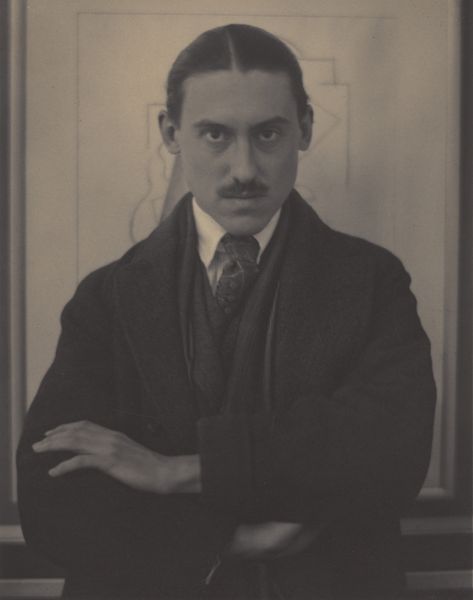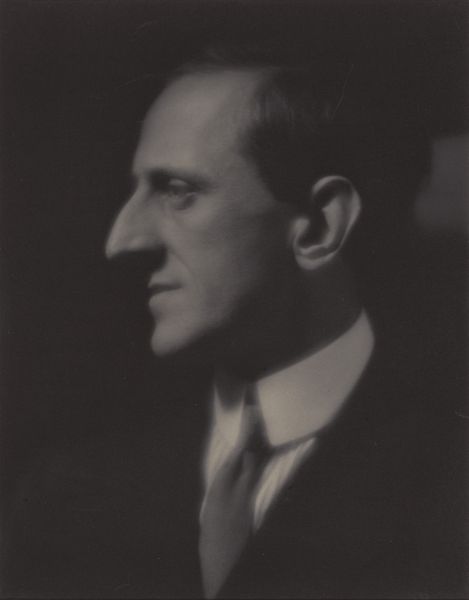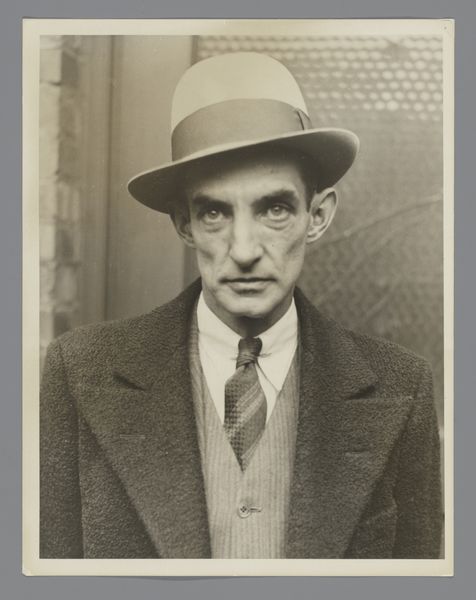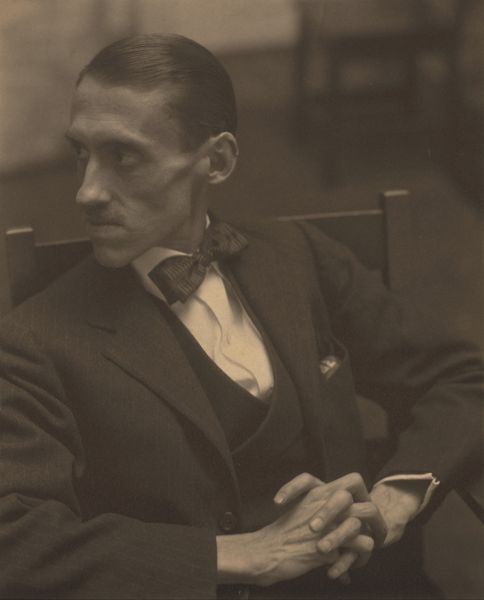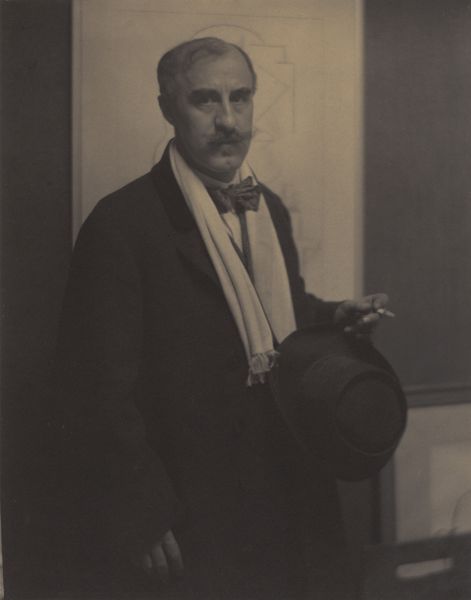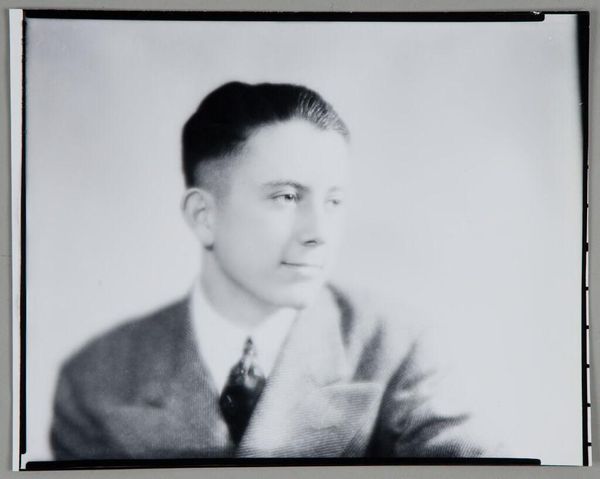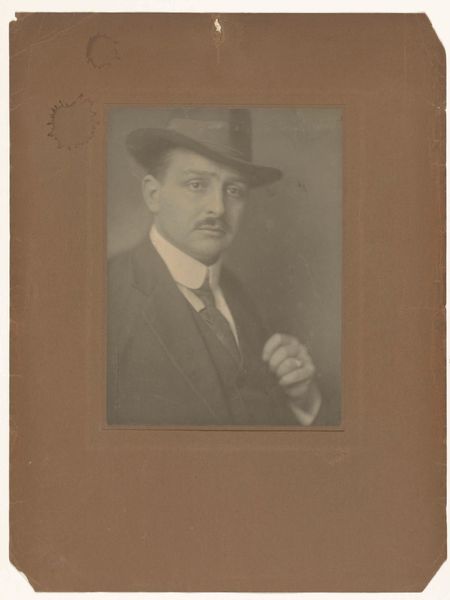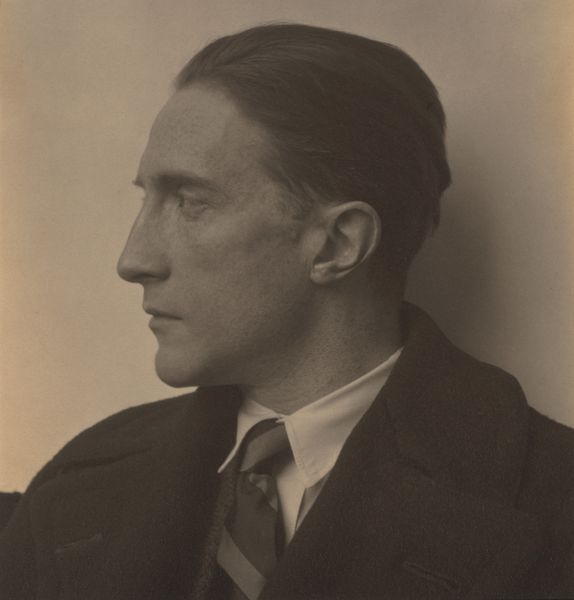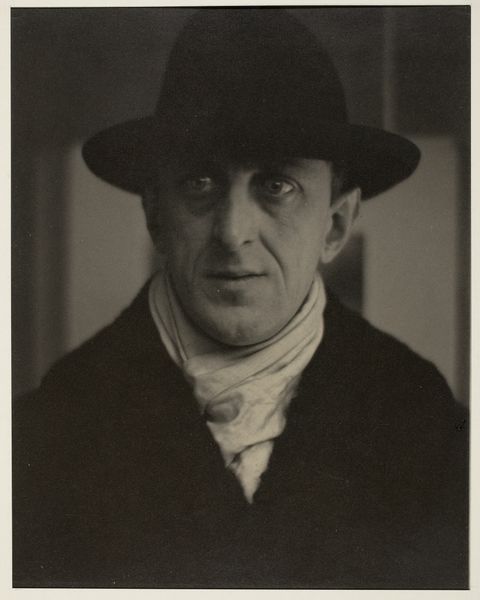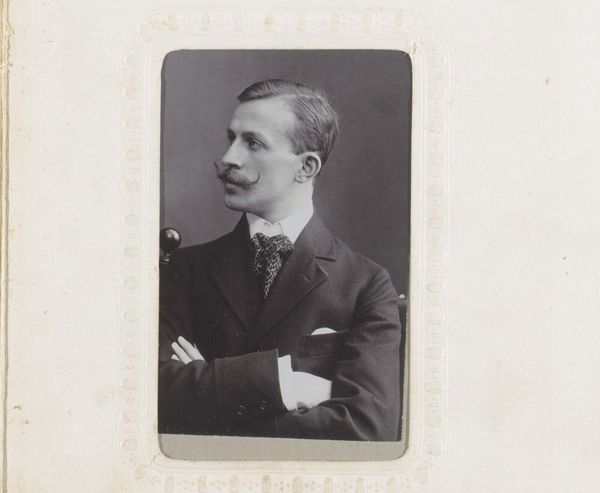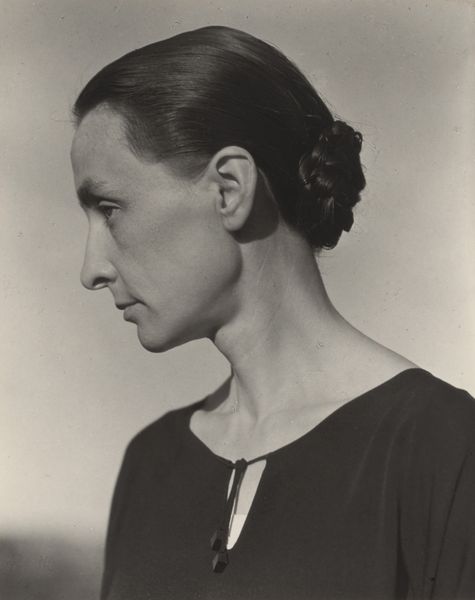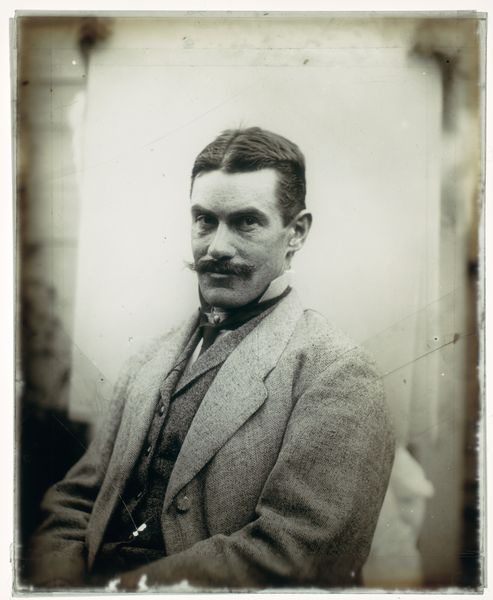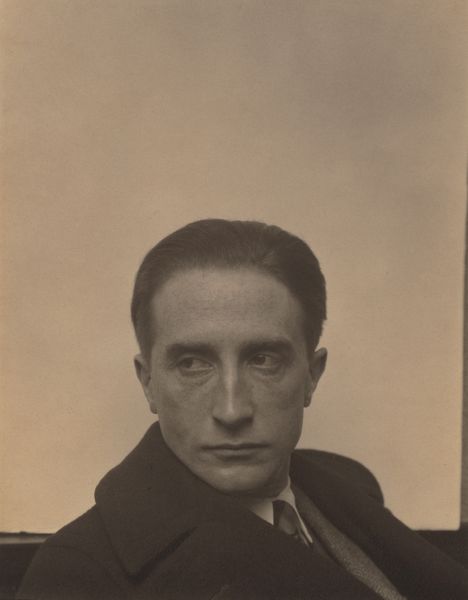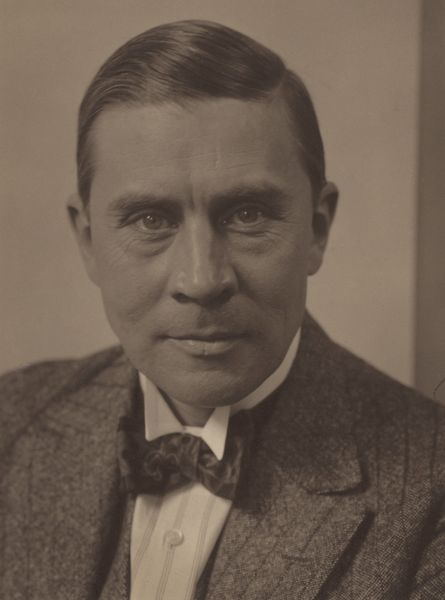
photography
#
portrait
#
portrait
#
photography
#
modernism
Dimensions: sheet: 23.2 x 18.7 cm (9 1/8 x 7 3/8 in.) mount: 51.5 x 38.5 cm (20 1/4 x 15 3/16 in.)
Copyright: National Gallery of Art: CC0 1.0
Curator: This is Alfred Stieglitz’s portrait of Charles Demuth, captured in 1923. The photographic print shows Demuth in a darkened suit, leaning his head wearily against a pale wall. What are your immediate impressions? Editor: The texture grabs me first. It's stark—that almost rough paper grain. It adds to the image’s emotional weight, giving it an air of vulnerability. Demuth’s posture really enhances this feeling; he looks physically and mentally exhausted. Curator: Absolutely. Consider the broader context. Stieglitz and Demuth were vital figures in promoting modernism in America. Demuth, struggling with health issues for years before this portrait, found that his artistic practice became inseparable from his physical body and its capabilities. This piece exemplifies his commitment. Editor: So, we're considering the artist’s health as a material constraint. Fascinating. The choice of photography over painting also plays a role, wouldn't you say? It seems almost brutally honest, highlighting Demuth’s weariness, his visible physical frailty. Curator: Exactly. Photography held a specific value for Stieglitz, offering him a way of capturing not just appearances but inner truths and realities. Remember Stieglitz saw photography as a fine art form, equal to painting or sculpture, even when the public held it in low regard. He devoted his galleries to fighting for this notion. Editor: This photo challenges typical ideas about celebrity or status, showing him in this vulnerable moment. Was this part of Stieglitz's larger social commentary, trying to democratize art and representation by humanizing someone important? Curator: Perhaps. Stieglitz wasn't simply documenting; he was engaging in a dialogue about art, identity, and the very act of seeing in the modern world, and this photograph exemplifies these complex politics. Editor: It is powerful how Stieglitz's own beliefs in photography intersect with Demuth’s lived experiences, particularly illness. Thanks for bringing these interconnected levels of meaning to light. Curator: My pleasure. Considering the art's complex contexts always enriches our perception.
Comments
No comments
Be the first to comment and join the conversation on the ultimate creative platform.
